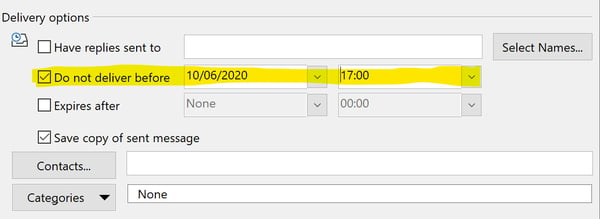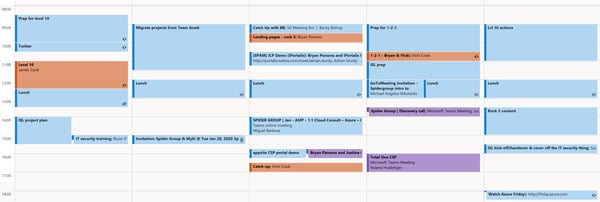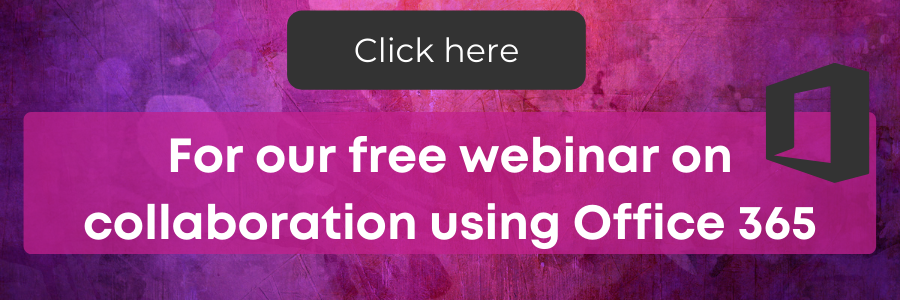What Is Outlook and How Does It Work
Millions of people use Microsoft Outlook but how many really make use of its features? The abundance of buttons and tabs can put some people off, it can seem confusing and complicated. But it's quite brilliant, most people just aren't using it effectively. Here are 10 features that most people are unaware of, which have the potential to change your entire experience of Outlook: Sometimes I work late at night, but I don't always want clients knowing that. You might have some news, a blog, or an article that you don't wish people to know about until the next day, but you won't have time then to start sending updates. Outlook allows you to write an email and schedule when you want it to go out. How: Once you've written your email, go to Options>Delay Delivery and tick the box that reads Do not deliver before, then enter the date and time you would like the message held until. Click close and then send your email. It won't be sent prior to your specified time. Pro tip: since May 2020 the same functionality is available with Microsoft Office 365 webmail. If like me you find yourself switching between contacts, calendar and email frequently, then you'll really like this feature. It allows you to create a new task or appointment without having to leave your inbox. How: from your email home page click the drop down arrow next to the New Email button. Then you simply select which item you would like to add: a contact, meeting appointment and so on. You can also access the same list by right clicking on your Outlook Icon in your Start Bar. Pro tip: Quickly create a new calendar appointment that includes the contents of the email by dragging the email onto the calendar icon in Outlook. If you send similar emails on a regular basis, for example to invite people to an event, then Quick Parts allows you to save the text of the email (or parts of it). Then you can insert it into future messages. Plus, if you save it as auto text, then next time you start to write the same content, Outlook will suggest the remaining text for you and you can simply hit Enter to insert the text. How: Once you've written your email, highlight the text you wish to save. Go to the Insert tab (top menu bar). Click Quick Parts, then Save selection to Quick Part Gallery. You can then give it a name for easy reference and in the Gallery drop down you can save it as Quick Part or as Auto text which will automatically suggest it next time you start to type the beginning of the sentence. We love keyboard shortcuts and there are some handy ones to know for when using Outlook: If you haven't used keyboard shortcuts before, we'd highly recommend learning a few - you'd be amazed how much they speed up your day! Most people use the default view of their inbox but there are other ways to view it which may suit you better. How: in Windows, click the View tab (top toolbar) and then Change View. You should see a few preset views to choose from. If you wish you can go a step further then you can click View Settings, where you can add columns, sort emails, change the font and much more. Once you have the settings you'd like you can save the view. I really like this. You can custom the way that certain emails appear. For example, instead of bold, my unread emails are Green. Even more useful is that any emails that contain a certain word (in the title or body) are blue. This really helps me when I'm looking for particular emails. For example we organise an event called Tech Talks, I can see relevant emails to the event at a glance which is extremely helpful. You could have emails from your boss in a bright colour to make sure you spot them, or emails where you're only copied in (rather than addressed directly) in a lighter colour. Pro tip: you can do the same with calendar appointments, for example, turn all the Microsoft Teams online meetings purple and all the meetings with your boss a bright red! Sharing calendars can save time and make for better teamwork. At SpiderGroup most of us have access to at least one other person in the office, while many of us share access to our calendars with everyone. It's useful to see what availability people have, especially when you need to book a meeting! How: To share your calendar with someone go into your calendar and click Share Calendar. Enter the contact you wish to share your calendar with. In the details drop down menu you can select whether you want them to see availability only or full details (you can still lock personal appointments if you wish) - or even if you want them to be able to put items directly into your calendar. Finally click Send. The Recipient accepts your request and will have access to your calendar. Tasks are definitely among the items that are seriously under-used. Similar to calendars, task lists can also be shared. Even better you can actually delegate tasks to people in your team. This is great if you're working on a project with one or more people, because you can assign certain tasks to certain people and get notified of when they are complete. Everyone can see how close to completion they are and if any are yet to be started. How:First create a task (Task > New Task). Enter as many details as you wish: subject, start date, due date, status and so on. On the menu bar select Assign Task and put the name of who you would like to assign the task to and click Send. The recipient can accept or decline the task, and you'll get notified of their response. If you also ensure both boxes are ticked when you send the task you'll keep an updated copy of the task on your task list and you'll also get a status report when the task is complete. Pro tip: Microsoft Office 365 includes the 'To Do' app, this automatically includes any tasks you have in Outlook but also flagged emails and Planner too! All your tasks in one view with the ability to schedule and organise them. The rules element of Outlook helps you to prioritise and organise emails to suit you. Examples of what you can do include: having emails from a particular person going to a separate folder. You might want newsletters to go to a 'read later' folder for when you have some quiet time. You might want to permanently delete emails from a particular person, (that certain someone who sends blanket emails that you cannot unsubscribe from, perhaps). You can forward certain emails to someone else on the team or have folders specific to certain projects. You can also have an alert sent to your phone if you're waiting on something urgent for example. How: To manage and create new rules you go to Rules>Manage Rules & Alerts>New Rule. From here you can select the type of rule you want to apply then click Next to add more details such as whether its a rule for certain people or subjects, click Next again and add the details of what you want to happen to those emails. You can change the rules at any time by following the same process without clicking New Rule. Pro tip: Using Microsoft's Power Automate feature of Office 365 (AKA Flow) you can add some clever automation to your emails, for example, if you get the daily office cake selection to your inbox you could create some automation to share it with the rest of your office via Microsoft Teams. Gone are the days of having to partition out all your emails into separate folders so you have any hope of finding them again. The search feature in Outlook has improved a great deal and can help you find any content based on only a few words. How: You can just type your search criteria into the search bar at the top of your Outlook window, but if you want to get to the right result quickly, here are some top search tips: add 'from:' or 'to:' before your search to find emails from a specific person If you're after an email attachment try adding 'hasattachment:yes' looking for that elusive email you know arrived yesterday, try 'received:yesterday' If you're running out of space in your inbox you can find all the large emails by searching 'messagesize:enormous' Just want to see all the emails you've not found the time to read yet, try 'read:no' These are just some of our favourites but if you want to know any more or need help with any of the above, feel free to get in touch. 1. Scheduling emails

2. Create new meetings, appointments, tasks and contacts from one window.


3. Send similar emails quickly with Quick Parts
4. Keyboard Shortcuts
5. View it your way
6. View messages your way

7. Sharing calendars

8. Effective Task management

9. Creating and managing rules
10. Search

What Is Outlook and How Does It Work
Source: https://www.spidergroup.com/blog/10-features-of-outlook-that-most-people-dont-use